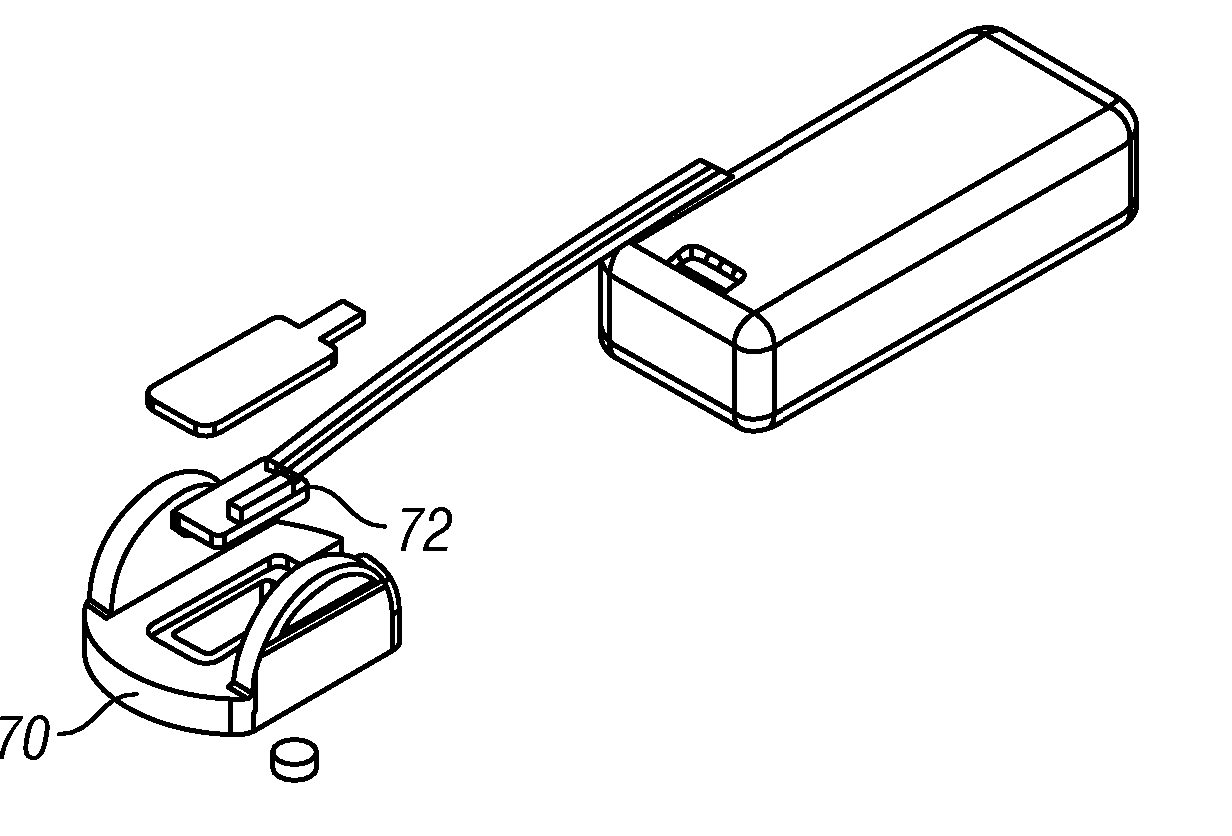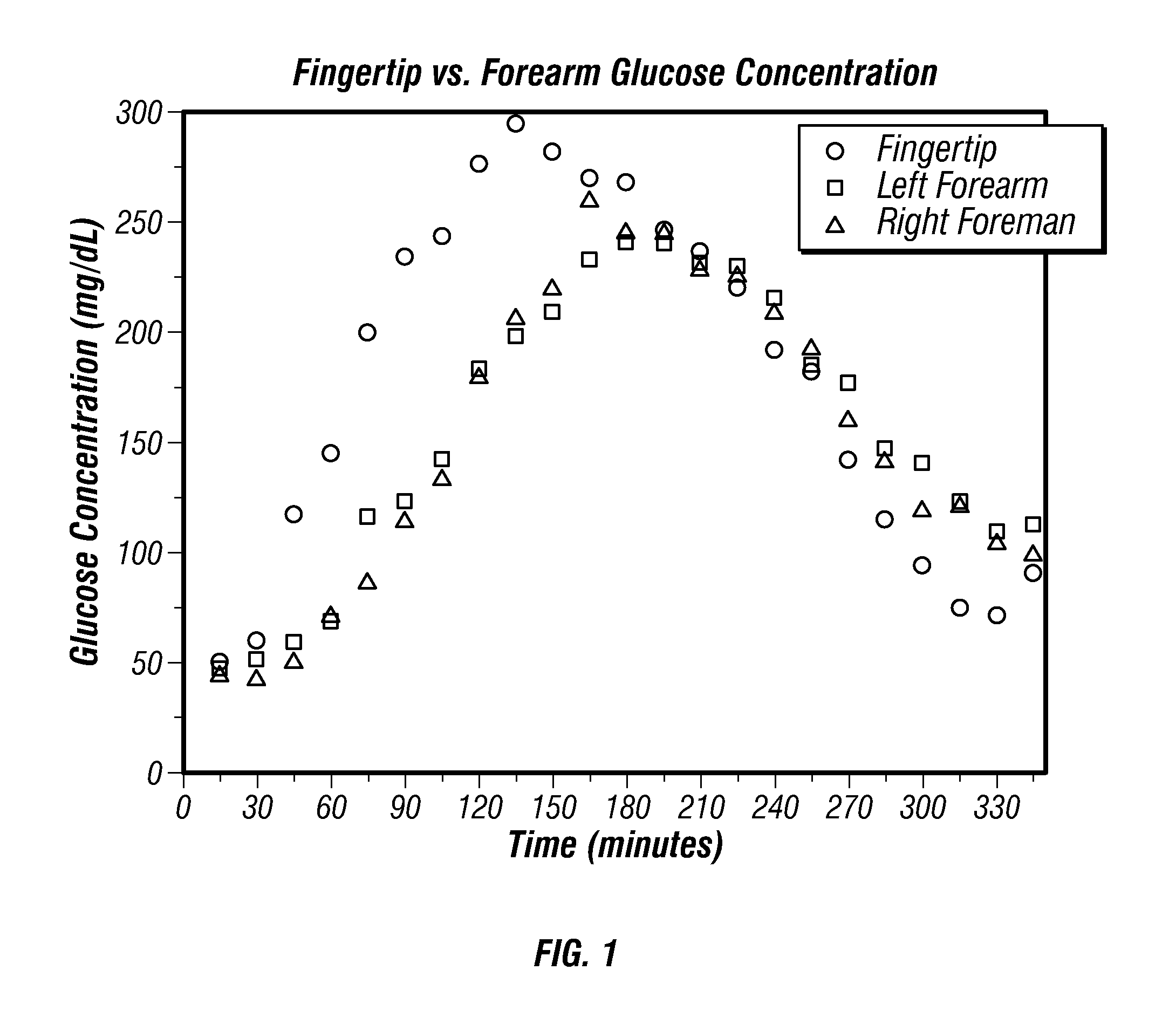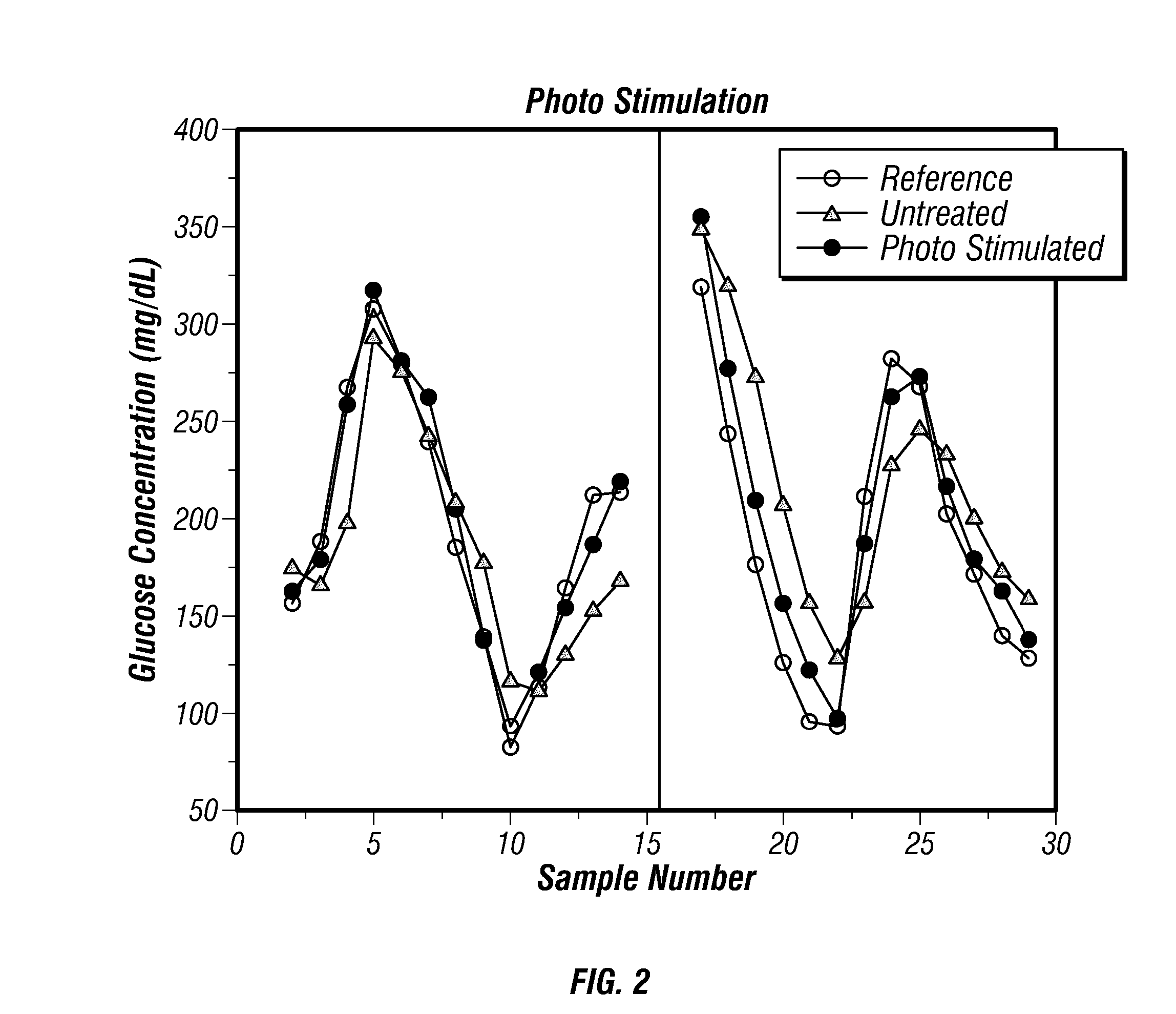Method and Apparatus for Photostimulation Enhanced Analyte Property Estimation
- Summary
- Abstract
- Description
- Claims
- Application Information
AI Technical Summary
Benefits of technology
Problems solved by technology
Method used
Image
Examples
example i
[0093] Referring now to FIG. 1, variations of glucose concentration at locations in the body is demonstrated. A diabetic subject was run through a glucose concentration perturbation. Over a period of four hours the glucose concentration started low at around 80 mg / dL, was increased to circa 350 mg / dL, and was brought back to circa 80 mg / dL. This profile was generated with intake of approximately seventy-five grams of a liquid form of carbohydrate in combination with subsequent injection of insulin to generate an ‘n’ glucose concentration profile. Traditional invasive fingertip capillary glucose concentrations were determined every fifteen minutes through the four-hour protocol and were followed quickly in time with alternative invasive capillary glucose concentration determinations with samples collected from the volar aspect of the subject's right and then left forearm. This resulted in 69 data points. The resulting glucose concentration profiles are presented in FIG. 1. The altern...
example ii
[0110] Referring now to FIG. 2, a graph is presented which shows an example of photonic-stimulation used to reduce or eliminate the differences in the glucose concentration between the alternative sampling site of the forearm and the traditional sampling site of the fingertip in terms of dampening and lag. In this study, a number of subjects were run through glucose concentration excursions driven by the combined use of carbohydrate intake and insulin injections. In this study, one forearm site was pretreated with 890 nm photostimulation while the contralateral site on the opposite forearm and fingertips were left untreated. The 890 nm stimulation was performed with three 890 nm LEDs for a period of 30 minutes immediately prior to the glucose concentration data collection. Invasive glucose concentration determinations were subsequently obtained every 20 minutes from all three locations. For two representative subjects, the resulting glucose concentration profiles are presented in FI...
example iii
[0112] A photonic-stimulation device or apparatus is used as a stand alone device or alternatively is incorporated into a more complex apparatus, such as a part of a noninvasive analyzer. In two additional embodiments, the photostimulation device is used alone, in the invasive glucose concentration determination section, or as part of a larger device, in the noninvasive glucose concentration determination section.
Source or Illumination Optics
[0113] A general overview of a photonic-stimulation source with some possible embodiments follows in this section. A photostimulation apparatus includes at least: a power supply and a source. A wide number of sources are available as light stimulation sources. These include but are not limited to: light emitting diodes, broadband sources, lasers, and diode lasers.
[0114] A preferred photostimulation source is a light emitting diode (LED) or multiple light emitting diodes over a narrow wavelength range, such as a wavelength range about 100 nm ...
PUM
 Login to View More
Login to View More Abstract
Description
Claims
Application Information
 Login to View More
Login to View More - R&D
- Intellectual Property
- Life Sciences
- Materials
- Tech Scout
- Unparalleled Data Quality
- Higher Quality Content
- 60% Fewer Hallucinations
Browse by: Latest US Patents, China's latest patents, Technical Efficacy Thesaurus, Application Domain, Technology Topic, Popular Technical Reports.
© 2025 PatSnap. All rights reserved.Legal|Privacy policy|Modern Slavery Act Transparency Statement|Sitemap|About US| Contact US: help@patsnap.com



